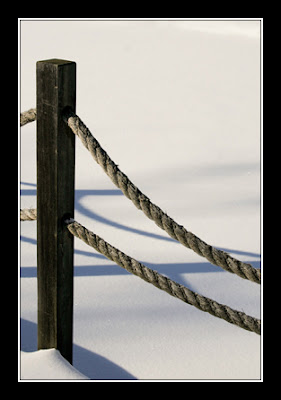On the Santa photos taken earlier this week, I was demonstrating the "background blur" effect of using different sized apertures to photograph a flat Santa, placing Santa different distances from the background and the camera different distances from Santa. In those photos, it was the effect of the blurred lights in the background that was more important than the Santa.
The photo below show the same depth of field blurred effect. However, in this photo, Kauffman's face is the focal point. The background, including the rest of his body, is not important.
 |
50mm lens f 1.8
camera about 3 1/2 feet from Kauffman
Note: Kauffman's nose eyes and eyebrows are the only things in focus.
|
In the photo below, the blur on Carmello's nose is a little distracting, so a slightly smaller aperture or moving the camera farther back would have brought his nose more into focus. The background, however, (someone's legs) would have been totally distracting had it been in focus (a photographer takes what is given to her with a dog!).
 |
50mm lens f 2
camera about 2 feet from Carmello
|
Useful photography technique: you can use a blurred background as:
(1) an important part of the photo, such as softly blurred Christmas lights;
(2) to de-emphasize an unimportant part of the scene;
(3) to emphasize an important feature, such as eyes

































